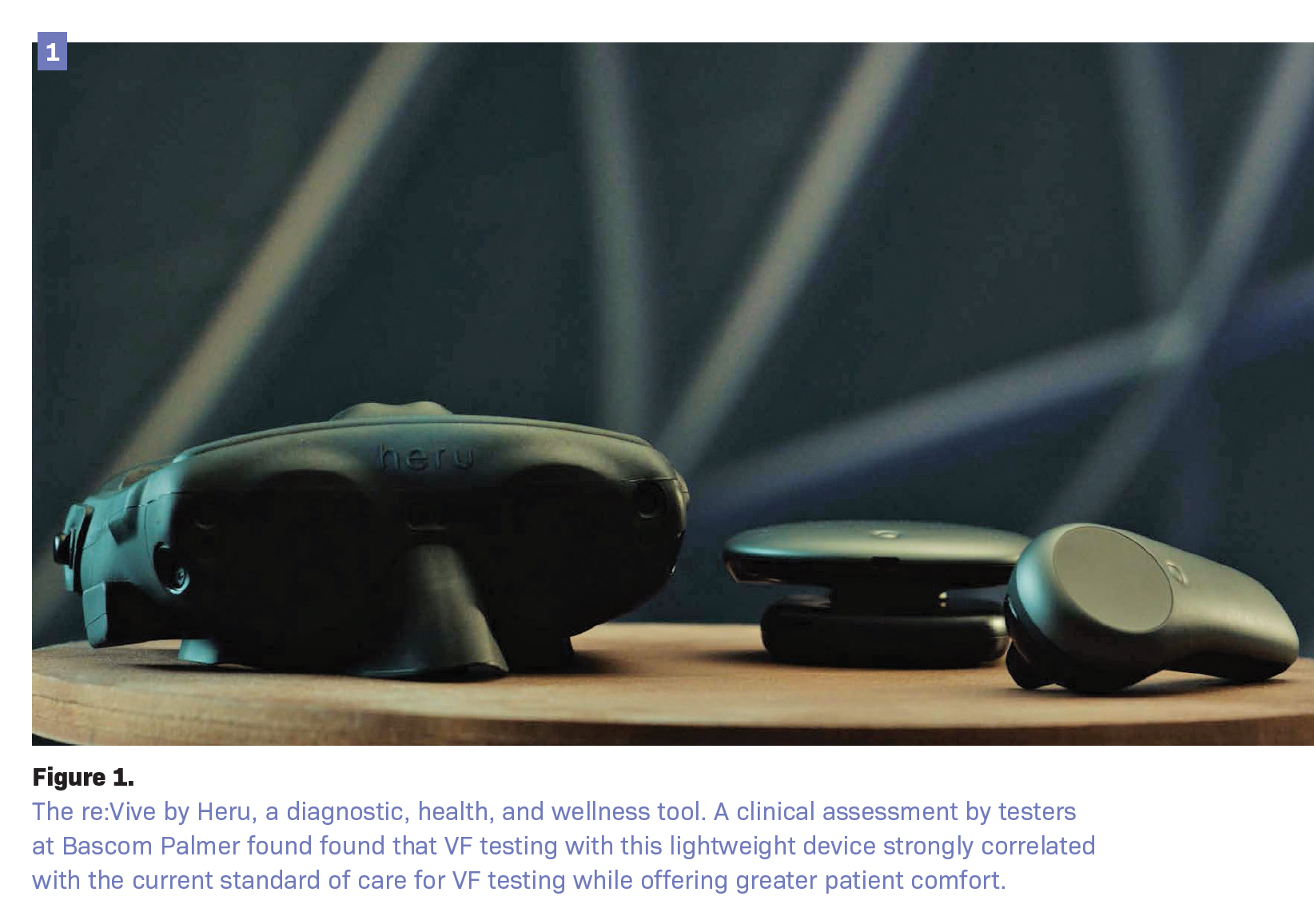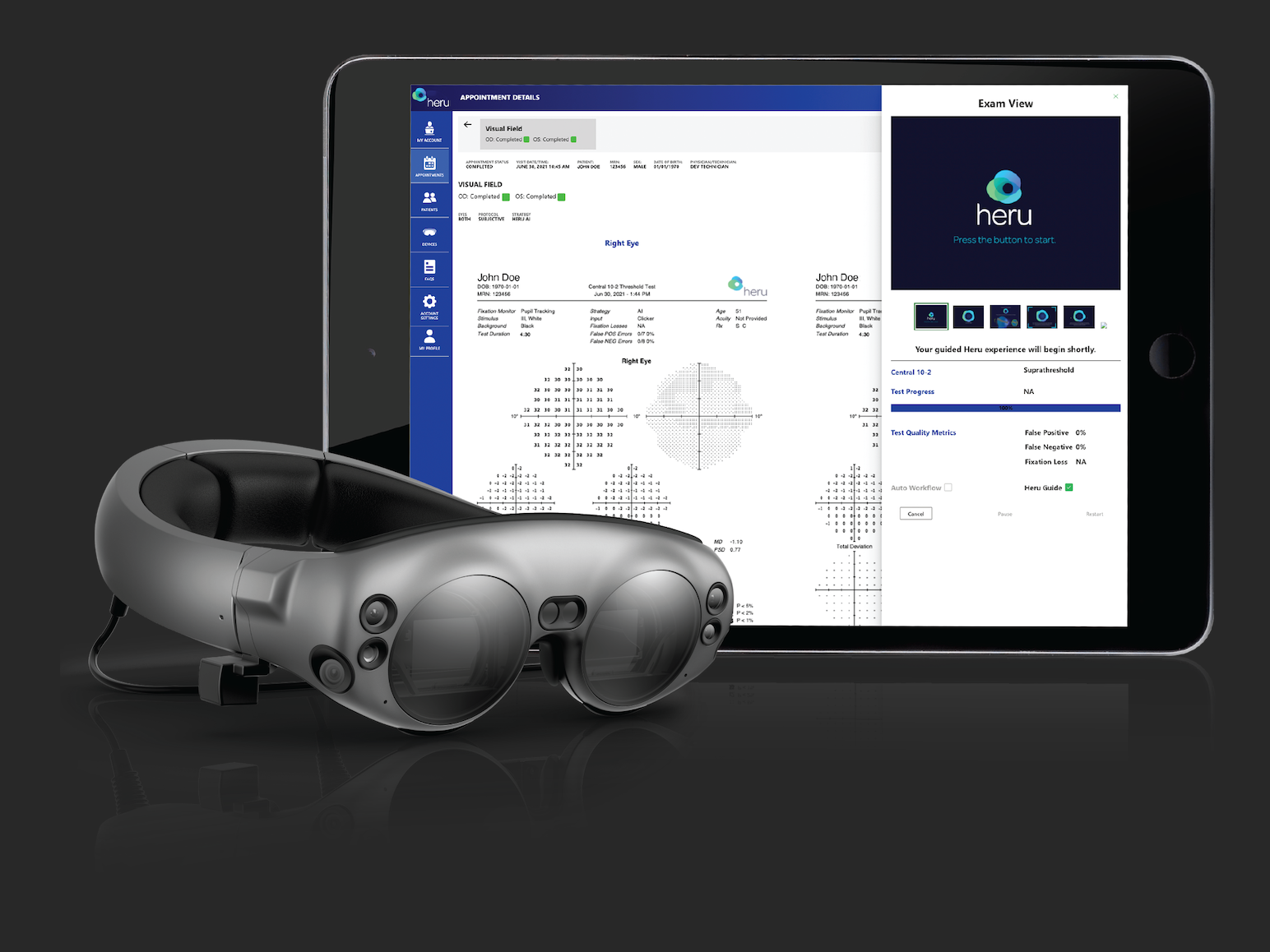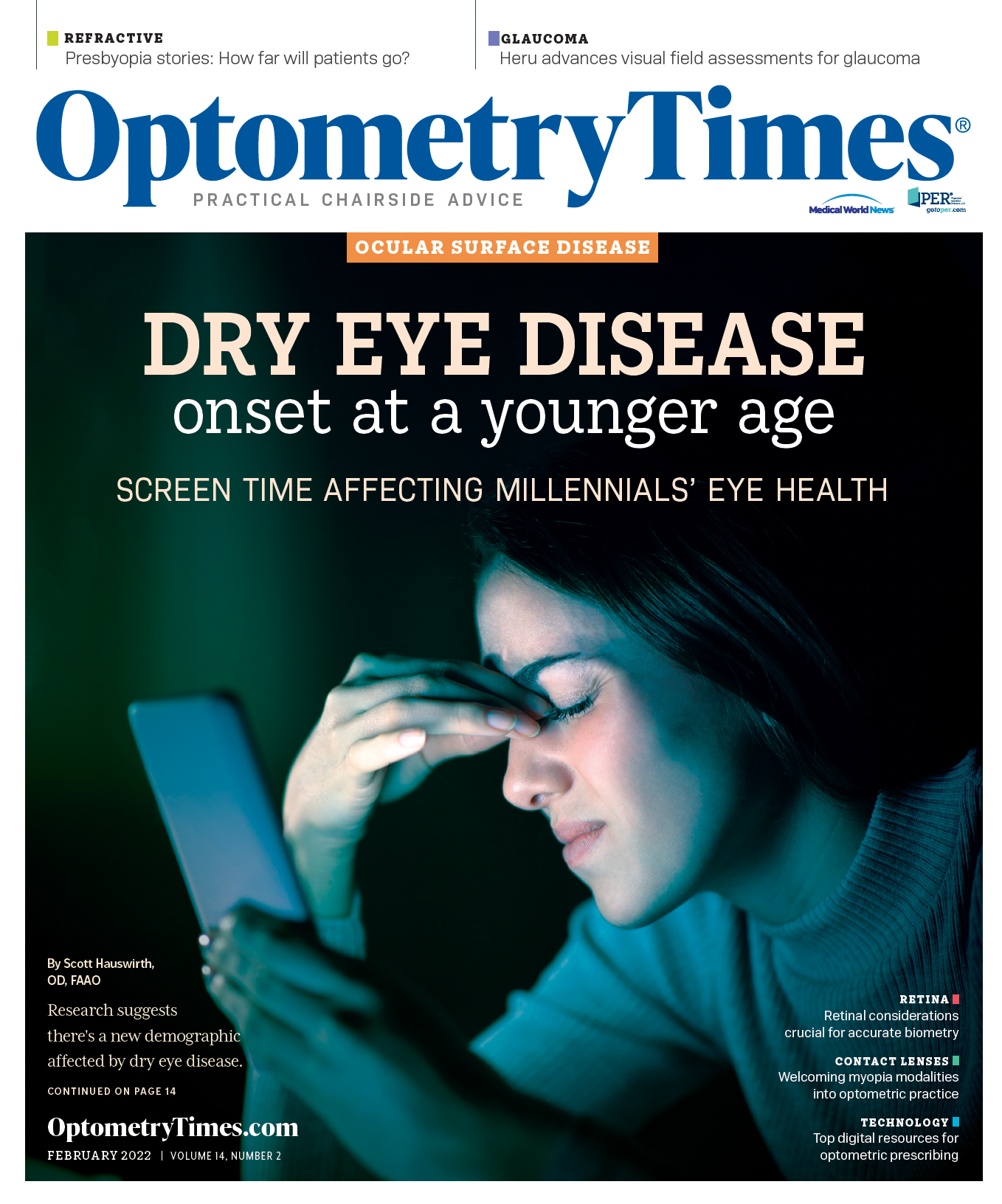- Therapeutic Cataract & Refractive
- Lens Technology
- Glasses
- Ptosis
- Comprehensive Eye Exams
- AMD
- COVID-19
- DME
- Ocular Surface Disease
- Optic Relief
- Geographic Atrophy
- Cornea
- Conjunctivitis
- LASIK
- Myopia
- Presbyopia
- Allergy
- Nutrition
- Pediatrics
- Retina
- Cataract
- Contact Lenses
- Lid and Lash
- Dry Eye
- Glaucoma
- Refractive Surgery
- Comanagement
- Blepharitis
- OCT
- Patient Care
- Diabetic Eye Disease
- Technology
Heru advances visual field assessments
New platform has potential to overcome challenges of legacy technology


Like vision professionals around the world, I use the Humphrey Field Analyzer (Carl Zeiss Meditec, Dublin CA) every day in my practice to evaluate visual field (VF) deficits in patients with glaucoma or other vision disorders.
As a specialist who encounters a wide range of eye diseases and disorders, I value the HFA as an important diagnostic.
However, there are drawbacks to using legacy VF instrumentation, including size, immobility, and cost.
The HFA typically requires dedicated space, taking up valuable room and making it difficult to reconfigure the layout or to transport the instrument for off-site screening or diagnostic purposes, like to a community health fair.
Comfort is another issue for many patients—especially those with mobility problems—as it can be difficult for them to position their eyes appropriately and stay engaged for the duration of the test.
A new, wearable platform called re:Vive (Heru) has the potential to overcome some of these disadvantages (see Figure 1).
The benefits of re:Vive include improved patient experience, more efficient provider workflows, far greater opportunities to offer off-site vision screening services and the flexibility to accommodate some patients with physical limitations that might preclude testing with traditional devices.
Related: Heru receives CES Innovations Award for re:Vive
This is impressive technology that I believe will benefit doctors and patients alike. It received a CES Innovation Award from the Consumer Technology Association, which underscores how easy it is to use and how ingenious is its design.
In our clinical assessment of re:Vive at Bascom Palmer, we found that VF testing with this lightweight device strongly correlated with the current standard of care for VF testing while offering greater patient comfort.
Both technologies found similar patterns of abnormality in individuals with vision loss and confirmed normality in those without vision loss. The results were not exactly the same, owing to differences in the devices and in patient responses.
We also found some advantages in data quality, as re:Vive uses real-time gaze tracking to continuously confirm the patient’s fixation rather than requiring patients to work at fixating on a static location for a long period of time.
Test results are given in organized, familiar, and easy to interpret display (see Figure 2).
A recent prospective study by Heru found that VF test results from re:Vive were clinically equivalent to those from the HFA. The study was performed on 47 patients—26 of whom had glaucoma or neuro-ophthalmic diseases and 21 who did not.1 The study found strong correlations between Heru’s and HFA’s VF mean deviation and threshold values in normal eyes and eyes with glaucoma and other pathologies.
Figure 2. Visual field report as seen in the Heru portal. Testing was performed by Heru’s re:Vive platform. (All images courtesy of Heru)

The patient perspective
For most patients, the re:Vive platform offers a more agreeable experience than legacy instruments.
They are better able to maintain a comfortable position, given the flexibility the device affords, and patients who are concerned about exposure to COVID-19 or other viruses appreciate being able to undergo the examination without facing a bowl and distanced from a technician.
I was not surprised that young adults welcomed the opportunity to use the familiar technology found in this interactive platform. Interestingly, most older adults who tried the device were also impressed with its comfort and ease of use.
Bascom Palmer is a specialized eye care center. Our patients with glaucoma are accustomed to testing, including visual field testing.
The re:Vive added a bit of a wow factor to their check-up visit—something to tell family and friends. Interestingly, patients also perceive the test to be much shorter and their performance better.
As with other devices, inexperienced patients may need a little coaching on how to use the headset.
But Heru has incorporated a friendly virtual “personality” that not only instructs but also monitors the patient throughout the examination, and it frees up staff to finish charts and prepare for other patients.
Related: Population screening needed for earlier detection of visual field defects
The provider perspective
With re:Vive, providers can perform VF assessments anytime during a visit, with the flexibility of using convenient locations within the clinical space.
Through ease of set up and instruction, combined with flexibility of position and location that favors patient comfort and the benefit of features such as internal fixation monitoring, re:Vive enhances clinic workflow and reduces repeat testing.
In fact, one of its advantages is that it reduces the time spent on VF assessments, which improves the productivity of doctors, technicians, and other staff members.
And because re:Vive is cloud-based, results are available almost immediately and can be accessed by doctors anywhere: at other practices, in a home office, or on-site in the clinic. Re:Vive software upgrades are likewise sent via the cloud, which is more efficient than updates to legacy hardware.
When operating in screening mode the re:Vive platform automatically switches to diagnostic mode if it identifies an abnormality during the initial screening.
This feature gives doctors detailed information about the VF deficit without having to return for follow up testing and without having to go back to a legacy instrument for a second examination.
Long-term potential
Although legacy instruments will continue to play a role in the identification and monitoring of VF deficits, the new technology has a promising future.
Most recently, Heru announced the expansion of the re:Vive platform to include three new testing modalities: for color vision, contrast sensitivity, and dark adaptation.
The second-generation device will offer 6 diagnostic exams, with 5 revenue-generating CPT codes in a single wearable solution.
For instance, it can perform a routine color vision (Ishihara) test. Patients who fail the Ishihara test will automatically be given the diagnostic D-15 exam, a reimbursable procedure with many supported ICD-10 codes.
When additional testing is needed the enhanced capabilities in a single device provides greater efficiency in diagnosing and managing patients, while performing tests that are not excluded or unbillable when performed with other tests such as visual field, optical coherence tomography, and office visits.
Finally, re:Vive 2.0 can offer VF screening and other diagnostic exams to populations with undiagnosed vision problems at home and abroad.
This portable technology can be easily deployed at a community health fair or taken on a medical mission to improve patient access and reach patients in need who might be at risk for vision loss.
Reference
1. Heru. Rethinking glaucoma management using wearable diagnostics from Heru reVive visual field. Accessed January 9, 2022. https://www. seeheru.com/rethinking-glaucoma-management-using-wearablediagnostics- from-heru-revive-visual-field/

